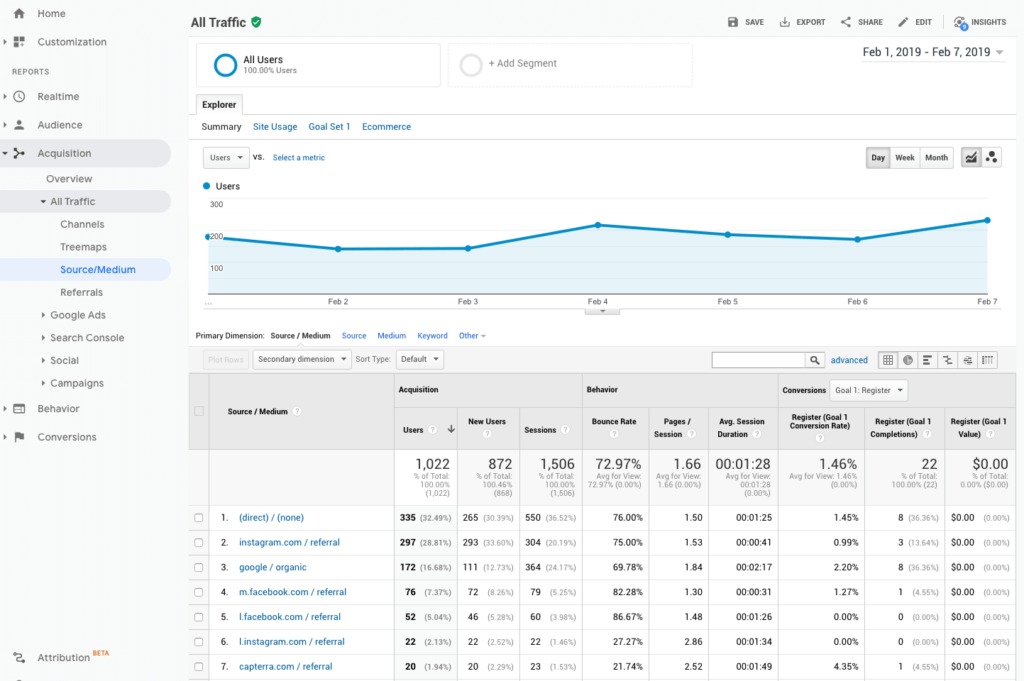Nowadays, social media presence is expected from every business. The vast majority of businesses use digital platforms to make their brand be seen and heard, as well as connect with their target audience… But if only things were this simple.
Unfortunately, not all businesses manage to successfully use the power of social media to achieve their goals. Most businesses end up pouring a significant amount of money into social media promotion and end up with no results.
Most of the time, it’s because of improper and inconsistent tracking of progress that makes businesses end up with ineffective spending and failed social media campaigns. Monitoring the progress of digital marketing campaigns is as important as the quality of the content.
Marketing campaigns are investments, and just like every investment, they should have a proper return on investment (ROI). Otherwise, the investment becomes a loss for the business.
To help you prevent your brand from social-media-marketing-related losses, we’ve put together this article where we’ll walk you through the process of setting up your campaign so that it’s properly tracked and to help you understand the process and the necessity of measuring the return of investment of each campaign afterward.
Let’s reveal our 4-Step plan for defining and measuring Social Media ROI for your business:
Define the purpose of social media for your brand
If you haven’t done so already, define what is the main purpose of social media for your brand. Is it brand awareness? New customers? Extending customer service? Or is it your goal just to stay connected with your current customers and make sure they are aware each time a new product is presented?
Make sure to clearly define the main purpose of social media for your brand. This will make things much simpler when it comes to creating marketing campaigns and measuring their effectiveness afterward.
Set realistic and measurable goals
Now that you have a clear purpose for your social media, it’s time to set goals. Whether it’s for the month, the quarter, or the year, make sure it’s specific and actionable. If the purpose of your social media marketing is to increase brand exposure you can set a number of impressions you want to get with your content. You can either choose a specific number of impressions you want to get or an increase that will be measured with percentage, i.e. increase Instagram page engagement by 5% in 4 months, gain 50,000 new followers on Twitter this following quarter, etc.
When setting goals, make sure to use the SMART framework. It goes to say that for a goal to be achievable and realistic, it needs to be specific, measurable, attainable, relevant, and time-specific. The framework helps you guarantee that your social media goals are properly defined and realistic for you to achieve.
By defining your goals, you not only make it easier to understand what direction your campaign should head, but you also get an idea of how you’re going to measure your social media ROI.
Don’t just settle for initial metrics though. You have to also calculate the effectiveness of the social media metrics you chose. In the case of the above-mentioned example, the number of impressions gained should be tracked to see which fraction of those impressions converted to new customers. With the right tracking tools, this can be easily done, regardless of where your impressions came from.
Monitor progress

Urchin Tracking Module (UTM) links and analytics tools are key for monitoring your social media success. Prior to starting your campaign, make sure you have a clear strategy for tracking visitors from each source.
Before we jump in on how you can do that, let’s first understand what UTMs are, in case you don’t already know. In basic words, UTMs are those links that have a question mark following the actual link which is followed by parameters and their values. What they help you achieve, is to understand from what source a visitor came to your website. And it helps you do that on several levels. Here’s an example:
https://example.com/article?utm_source=facebook&utm_medium=social-media&utm_content=discount-post&utm_campaign=special-offer
The UTM parameters start after the question mark: utm_source, utm_medium, utm_content, and utm_campaign. These are standard for every UTM. The value names are up to you, but the parameters are a best practice. You can also create your own parameters, but it is recommended that you stick with these. Here’s what each of it is used for:
- Source: A codeword for the source of the traffic. If you use this UTM to track visitors from Facebook, put down ‘facebook’ or ‘fb’, just make sure to be consistent and stick to the styling you first chose, otherwise your statistics will get messed up.
- Medium: Helps answer from what type of platform the visitor found out about your website. Is it from social media, your blog, third-party blog, publication, a referral from another website? This parameter helps you answer that question.
- Content (Optional): An optional parameter, that helps you identify a specific piece of content the traffic came from, i.e. article or post.
- Campaign: Refers to a campaign name that the link is a part of. The name and the campaign are up to you, of course.
Back to the tracking strategy, to start you need to first set up a spreadsheet where you’ll keep UTMs. Make sure it’s well organized and safely kept in the cloud. This is a crucial step for you to be able to track your social media ROI, so don’t skip it.
Now that you have a place to safely keep your UTMs it’s time to create them. You can use free UTM builder tools like Bit.ly or create it on your own. You can also create a formula in your spreadsheet for easily creating your UTMs and storing them at once. For a tutorial check Jordan Coeyman’s article on Medium.
For each new piece of content carefully fill out the parameters of your UTM links and, again, make sure to be consistent in your parameter namings. Now that you’ve set the ground for a trackable social media campaign, go ahead and run for a test period.
Track expenses
Now that you have completed your campaign with your UTMs, it’s time to analyze the results and the expenses you’ve invested. You need to analyze whether you’ve met your goal or not, then analyze the effectiveness of the metric of your choice, after which you will calculate your ROI with a formula.
To calculate your social media ROI you need to divide the revenue that resulted from your social media campaign to your expenses and multiply by a hundred. To understand your revenue from your social media use the UTM links in Google Analytics to understand which visitors converted to paying customers. Below is the formula:
SM Revenue/Expenses x 100 = Social Media ROI
As to expenses, besides paid campaign expenses, you should also use expenses such as employee salaries, any external costs related to content creation, i.e. outsourced design or video editing costs, etc. And there you go. With this formula, you can see how much of the social media work pays off.
Social Media ROI not only helps the administration of the company to understand the effectiveness of their investment into social media marketing efforts but can also help the marketing team to find ways to improve their campaigns.




